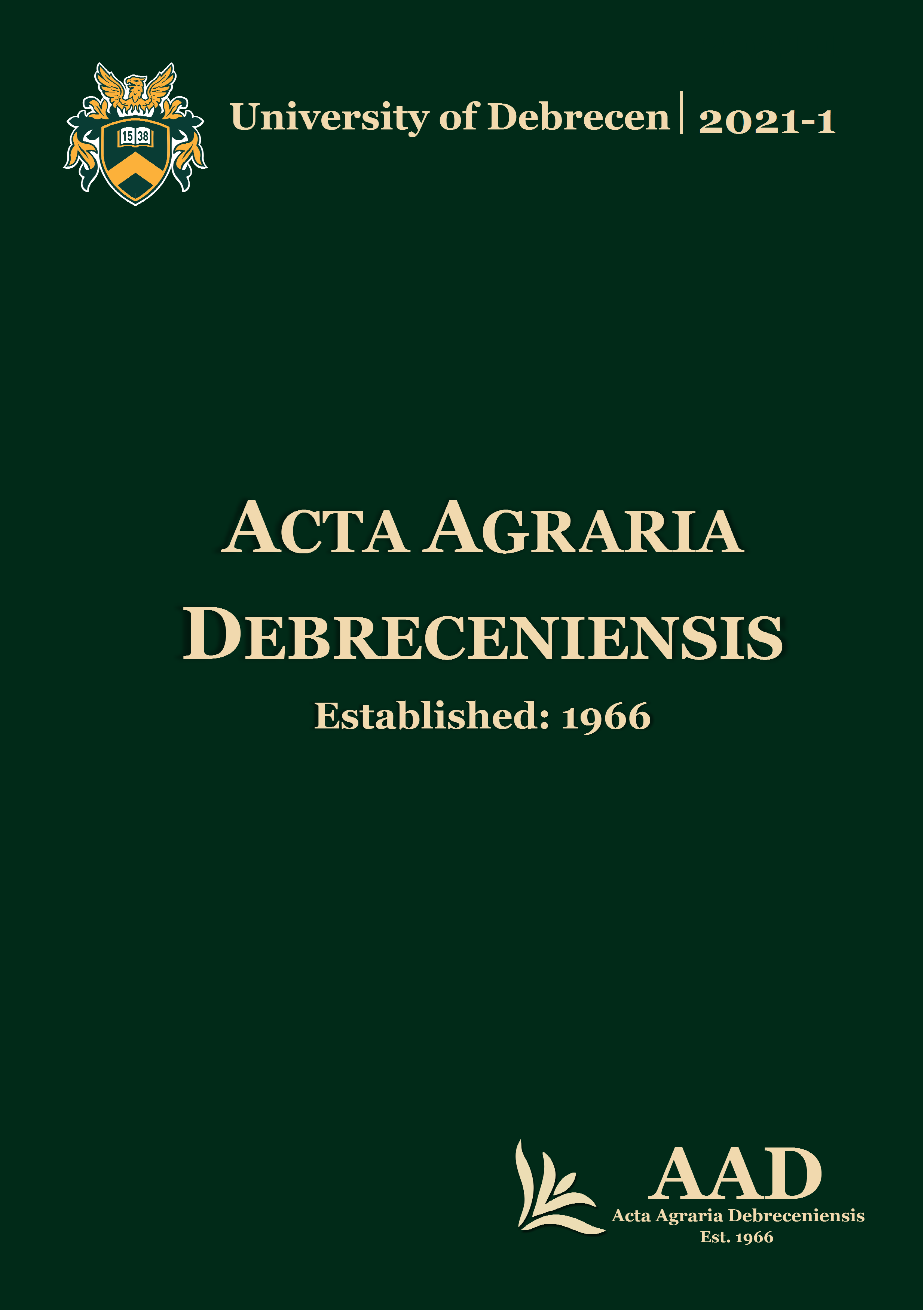Effect of different N doses on maize yield and quality
Authors
View
Keywords
License
Copyright (c) 2021 by the Author(s)

This work is licensed under a Creative Commons Attribution 4.0 International License.
How To Cite
Accepted 2021-02-10
Published 2021-06-01
Abstract
The effect of N doses on the yield and nutritional values of the Sushi (FAO 340) maize hybrid were analysed in three years (2018, 2019, and 2020). The analyses were performed at the Látókép Experimental Station of the University of Debrecen on calcareous chernozem soil, in a striped, small-plot, non-irrigated long-term field experiment. In the experiment, in addition to the non-fertilized treatment (A0), the N-fertilizer doses were applied as basic fertilizer and top dressing. The 60 and 120 kg N ha-1 dose (A60, A120) applied as spring basic fertilizer were followed by two phases of top-dressing in V6 (V690, V6120) and V12 (V12150, V12180) phenophases; the amounts were +30 and +30 kg N ha-1.
Maize yields were affected to varying degrees by crop year. The highest yields in 2018 and 2020 were recorded in the same V6150 treatment, while in 2019 the highest yield was obtained in the A120 treatment.
Increasing the N doses resulted in an increase in the protein content of the maize kernel. Depending on the fertilizer treatments and the crop year effect, the protein content of maize kernels varied between 6.2–10.2 g x 100 g-1. In all three years, the protein content was the lowest in the control treatment (A0) and the highest in the V6150 treatment.
The starch content ranged from 70.7 to 77.9 g x 100 g-1 in the average of the three years. In 2020, it was significantly higher in all nutrient treatments than in the other examined two years. The highest starch content - except for 2020 (A120, 77.9 g x 100 g-1) - was recorded in the A0 treatment (74.2, 72.3 g x 100 g-1).
The oil content of maize kernels varied between the values of 3.8 and 5.2 g x 100 g-1 in the average of three years. In terms of oil content, the results for 2018 and 2019 can be considered the same, while in 2020 it was significantly lower. Fertilizer treatments did not significantly affect the oil content of maize in any of the years.
The fertilizer dose applied in the V12 phenological phase was not effective in terms of yield and nutritional content (protein, starch and oil content).

 https://doi.org/10.34101/actaagrar/1/8493
https://doi.org/10.34101/actaagrar/1/8493